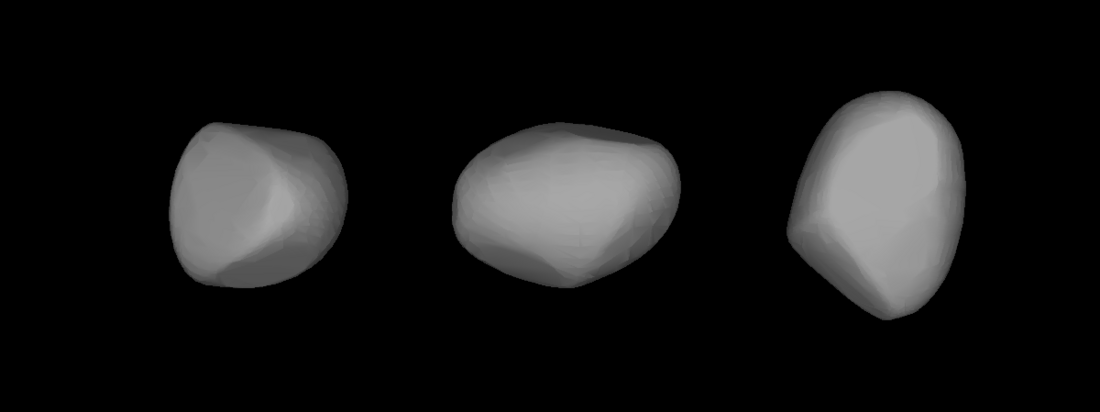125 Liberatrix
Main-belt asteroid From Wikipedia, the free encyclopedia
125 Liberatrix is a main-belt asteroid. It has a relatively reflective surface and an M-type spectrum. Liberatrix is a member of an asteroid family bearing its own name.
 A three-dimensional model of 125 Liberatrix based on its light curve. | |
| Discovery | |
|---|---|
| Discovered by | Paul Henry and Prosper Henry |
| Discovery date | 11 September 1872 |
| Designations | |
| (125) Liberatrix | |
| Pronunciation | /ˈlɪbəreɪtrɪks/[1] |
| A872 RA; 1902 EG; 1943 FE; 1949 OE1; 1949 SM; 1954 TD1 | |
| Main belt (liberatrix) | |
| Orbital characteristics[2] | |
| Epoch 31 July 2016 (JD 2457600.5) | |
| Uncertainty parameter 0 | |
| Observation arc | 143.54 yr (52428 d) |
| Aphelion | 2.95698 AU (442.358 Gm) |
| Perihelion | 2.53084 AU (378.608 Gm) |
| 2.74391 AU (410.483 Gm) | |
| Eccentricity | 0.077651 |
| 4.55 yr (1660.2 d) | |
Average orbital speed | 17.96 km/s |
| 307.971° | |
| 0° 13m 0.642s / day | |
| Inclination | 4.66407° |
| 169.003° | |
| 109.288° | |
| Earth MOID | 1.51912 AU (227.257 Gm) |
| Jupiter MOID | 2.13019 AU (318.672 Gm) |
| TJupiter | 3.340 |
| Physical characteristics | |
| Dimensions | 43.58±2.3 km[2] 61.058 km[3] |
| Mass | 8.7×1016 kg |
Mean density | 2.0 g/cm3 |
Equatorial surface gravity | 0.0122 m/s2 |
Equatorial escape velocity | 0.0231 km/s |
| 3.968 h (0.1653 d)[2][4] | |
| 0.2253±0.026[2] 0.1305 ± 0.0269[3] | |
| Temperature | ~168 K |
| M (Tholen)[3] | |
| 9.04,[2] 8.90[3] | |
It was discovered by Prosper Henry on 11 September 1872, from Paris. Some sources give Paul Henry sole credit for its discovery.[5] The asteroid's name is a feminine version of the word "liberator". Henry may have chosen the name to mark the liberation of France from Prussia during the Franco-Prussian War in 1870. More specifically, it may honor Adolphe Thiers, the first President of the French Republic, who arranged a loan that enabled the Prussian troops to be removed from France.[5]
In the late 1990s, a network of astronomers worldwide gathered lightcurve data to derive the spin states and shape models of 10 asteroids, including Liberatrix. Liberatrix's lightcurve has a large amplitude of 0.4 in magnitude, indicating an elongated or irregular shape.[4][6]
The spectrum of this asteroid matches a M-type asteroid. It may be the remnant of an asteroid that had undergone differentiation, with orthopyroxene minerals scattered evenly across the surface. There is no indication of hydration.[7]
To date, there have been at least two observed occultations by Liberatrix. Early on 11 December 2014, Liberatrix occulted a 9th magnitude star and was visible over the majority of Southern California and a swath of Mexico.[citation needed]
References
External links
Wikiwand - on
Seamless Wikipedia browsing. On steroids.
